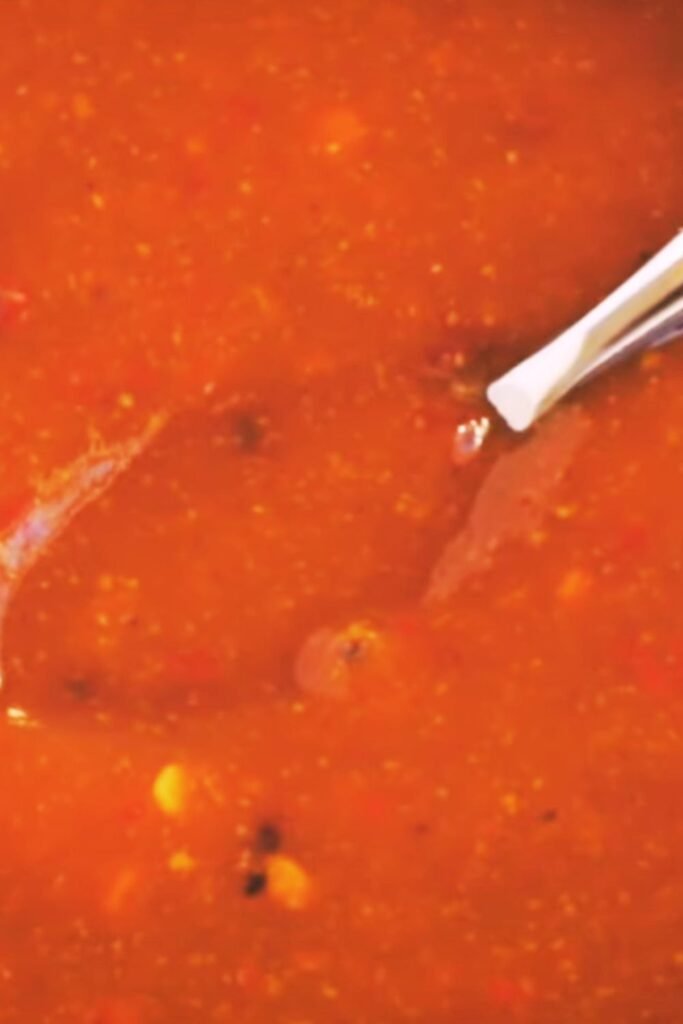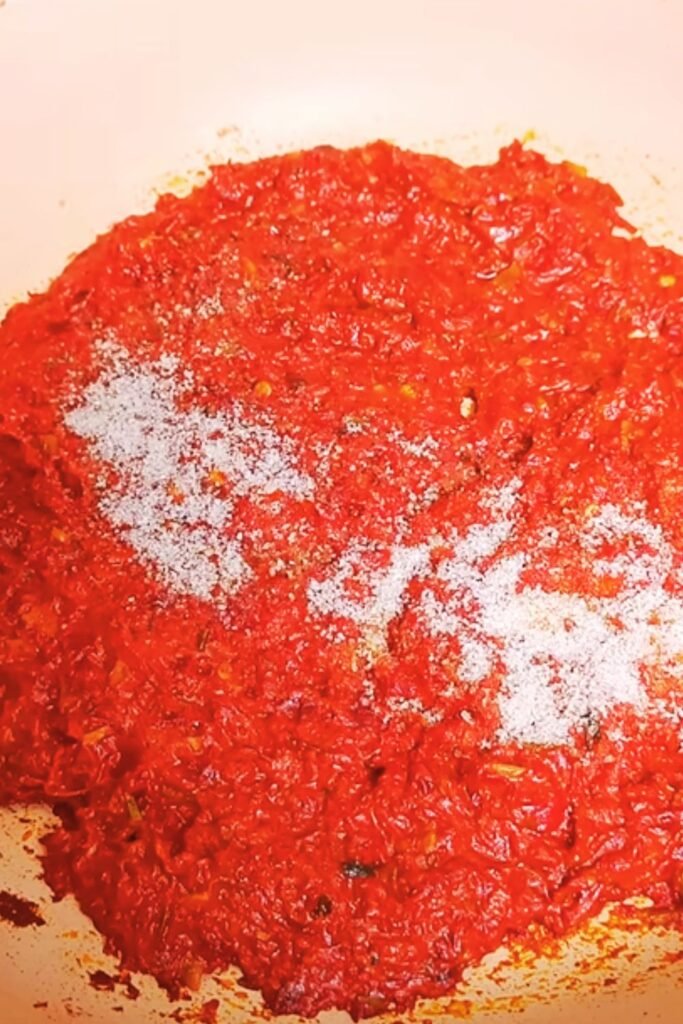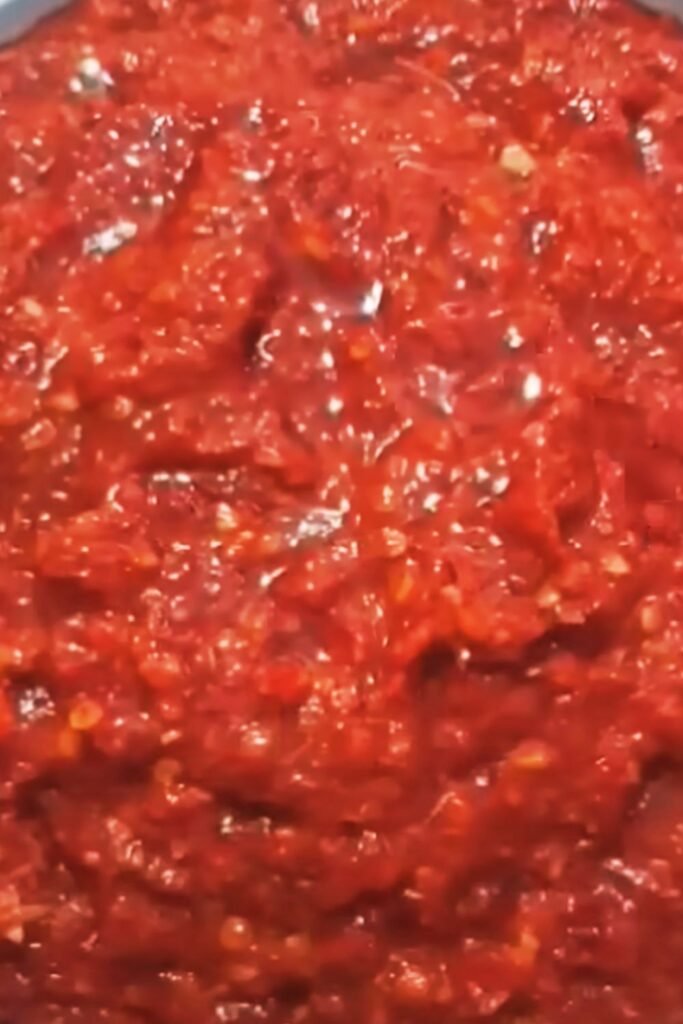Have you ever found yourself craving that perfect balance of spicy, sweet, and savory flavors that only Szechuan sauce can deliver? I certainly have, and after years of disappointing store-bought versions and inconsistent restaurant offerings, I decided to master making it at home. What started as a simple kitchen experiment has become my signature condiment, and today I’m sharing my perfected recipe with you.
This homemade Szechuan sauce isn’t just a condiment – it’s a flavor explosion that transforms ordinary dishes into extraordinary culinary experiences. Whether you’re dipping dumplings, glazing stir-fries, or marinating proteins, this versatile sauce adds that authentic Chinese flair that’s impossible to resist.
What Makes Szechuan Sauce Special?
Originating from China’s Sichuan province (also spelled Szechuan), this iconic sauce represents the region’s bold approach to flavor. Authentic Szechuan cuisine is known for its liberal use of garlic, chili peppers, and the unique numbing sensation provided by Szechuan peppercorns.
What many people don’t realize is that true Szechuan sauce isn’t just about heat – it’s about creating a complex flavor profile where spiciness dances with sweetness, umami, and that signature tingling sensation. After testing countless variations, I’ve found the perfect balance that delivers authentic flavor while using ingredients you can actually find.
The Essential Ingredients
Before we dive into the cooking process, let’s talk about what makes this sauce special. Each ingredient plays a crucial role in developing the complex flavor profile:
- Szechuan Peppercorns: The star of the show, providing that distinctive numbing sensation called “má”
- Dried Red Chilies: For that signature heat that Szechuan cuisine is famous for
- Chinese Rice Wine (Shaoxing): Adds depth and complexity
- Dark Soy Sauce: Provides rich color and umami flavor
- Light Soy Sauce: Adds saltiness without overpowering
- Chinese Black Vinegar: Contributes tanginess and complexity
- Doubanjiang (Fermented Broad Bean Paste): The soul of many Szechuan dishes
- Garlic and Ginger: The aromatic foundation of the sauce
- Brown Sugar: Balances the heat and adds caramelization
What truly sets my recipe apart is the technique of toasting the Szechuan peppercorns and infusing the oil with aromatics before building the sauce. These extra steps make all the difference between a good sauce and an exceptional one.
Equipment You’ll Need
Before getting started, gather these kitchen tools:
- Small skillet for toasting spices
- Medium saucepan
- Measuring spoons and cups
- Fine mesh strainer
- Mortar and pestle (or spice grinder)
- Heat-resistant glass jar for storage
- Whisk
Homemade Szechuan Sauce Recipe
Ingredients:

For the flavor base:
- 2 tablespoons Szechuan peppercorns
- 8-10 dried red chilies (adjust according to heat preference)
- 3 tablespoons vegetable oil
- 4 cloves garlic, minced
- 1 tablespoon fresh ginger, grated
For the sauce:
- 3 tablespoons doubanjiang (fermented broad bean paste)
- 2 tablespoons light soy sauce
- 1 tablespoon dark soy sauce
- 2 tablespoons Chinese black vinegar (Chinkiang vinegar)
- 2 tablespoons Shaoxing wine (Chinese rice wine)
- 3 tablespoons brown sugar
- 1/2 cup chicken stock or water
- 1 teaspoon sesame oil
- 1 tablespoon cornstarch mixed with 2 tablespoons water (slurry)
- 1 tablespoon toasted sesame seeds (optional, for garnish)
- 2 green onions, finely sliced (optional, for garnish)
Instructions:
Step 1: Prepare the Szechuan Peppercorns
- Heat a small, dry skillet over medium heat.
- Add the Szechuan peppercorns and toast for 2-3 minutes until fragrant, shaking the pan frequently to prevent burning.
- Transfer to a mortar and pestle or spice grinder and crush until coarsely ground.
- Sift through a fine mesh strainer to remove the husks (the inner black seeds can be bitter, so discard them and keep only the fragrant outer husks).
Step 2: Create the Flavored Oil Base
- Using the same skillet, break the dried chilies into pieces, removing most of the seeds if you prefer less heat.
- Toast the chilies for 30 seconds until they become fragrant.
- Add the vegetable oil to the pan with the chilies.
- When the oil is hot but not smoking, add half of the ground Szechuan peppercorns, minced garlic, and grated ginger.
- Stir constantly for 30-60 seconds until fragrant, being careful not to burn the aromatics.
Step 3: Build the Sauce
- Add the doubanjiang (fermented broad bean paste) to the aromatics and stir for 1 minute to release its flavors.
- Pour in the Shaoxing wine and stir to deglaze the pan, scraping up any flavorful bits from the bottom.
- Add the light soy sauce, dark soy sauce, and Chinese black vinegar.
- Stir in the brown sugar until dissolved.
- Add the chicken stock or water and bring to a gentle simmer.
Step 4: Thicken and Finish
- Reduce heat to medium-low and simmer for 3-5 minutes to allow the flavors to meld.
- While stirring constantly, slowly pour in the cornstarch slurry.
- Continue stirring until the sauce thickens to your desired consistency, about 1-2 minutes.
- Remove from heat and stir in the sesame oil and remaining ground Szechuan peppercorns.
- Allow the sauce to cool slightly before transferring to a sterilized glass jar.

Consistency and Storage Tips
The perfect Szechuan sauce should coat the back of a spoon but still pour easily. If your sauce becomes too thick upon cooling, simply reheat it with a splash of water.
For storage:
- Keep refrigerated in an airtight container for up to 2 weeks
- The flavors will actually develop and improve after 24 hours
- Bring to room temperature before using for the best flavor
- For longer storage, freeze in ice cube trays for portion-controlled use
Ingredient Substitutions
I always recommend using traditional ingredients when possible, but I understand they can be difficult to find. Here are some workable substitutions:
| Traditional Ingredient | Possible Substitution | Flavor Impact |
|---|---|---|
| Szechuan Peppercorns | Black peppercorns + lemon zest (will lack numbing quality) | Significant change – the numbing sensation will be absent |
| Doubanjiang | Red miso paste + chili paste | Moderate change – less complex but still workable |
| Chinese Black Vinegar | 2 parts balsamic vinegar + 1 part rice vinegar | Slight change – less complexity but similar tanginess |
| Shaoxing Wine | Dry sherry or mirin (reduce sugar if using mirin) | Minimal change for sherry, moderate for mirin |
| Dark Soy Sauce | Regular soy sauce + 1/4 tsp molasses | Slight change – less richness |
Common Problems and Solutions
| Problem | Cause | Solution |
|---|---|---|
| Sauce is too spicy | Too many chile peppers or seeds | Add a bit more sugar and/or a splash of water to dilute |
| Sauce is too thick | Too much cornstarch or reduction | Thin with water, chicken stock, or Shaoxing wine |
| Bitter taste | Burned aromatics or peppercorn seeds | Discard and start over with more careful temperature control |
| Not enough “numbing” sensation | Not enough Szechuan peppercorns or not properly toasted | Add more toasted and ground peppercorns |
| Too salty | Too much soy sauce or doubanjiang | Balance with a touch more sugar and acid (vinegar) |
Ways to Use Your Homemade Szechuan Sauce
This versatile sauce is so much more than just a dipping sauce. Here are my favorite ways to use it:
As a Marinade
Mix 2 tablespoons of Szechuan sauce with 1 tablespoon of oil and marinate:
- Chicken: 2-4 hours
- Pork: 3-6 hours
- Tofu: 30 minutes to 1 hour
- Beef: 6-8 hours
In Stir-Fries
Add 2-3 tablespoons during the final minute of cooking for an instant flavor boost. It pairs exceptionally well with:
- Vegetables like bell peppers, broccoli, and snow peas
- Proteins such as chicken, shrimp, or tofu
- Noodle dishes like lo mein or chow mein
As a Dipping Sauce
Serve it straight up or mix with a bit of honey for:
- Dumplings and pot stickers
- Spring rolls
- Crispy tofu
- Grilled meats
As a Glaze
Brush onto proteins during the last few minutes of cooking:
- Grilled chicken wings
- Roasted pork
- Baked salmon

Serving Suggestions
To create a complete meal featuring your homemade Szechuan sauce, consider these pairings:
Main Course Options:
- Szechuan Chicken with Vegetables: Stir-fried chicken and colorful vegetables coated in the sauce, served over steamed rice
- Mapo Tofu: Soft tofu cubes in a spicy Szechuan sauce with ground pork
- Dry-Fried Green Beans: Blistered green beans tossed with a light coating of the sauce
- Dan Dan Noodles: Egg noodles topped with spicy Szechuan sauce and ground meat
Side Dishes:
- Steamed jasmine or basmati rice
- Cucumber salad with rice vinegar and sesame oil to cool the palate
- Simple stir-fried bok choy or spinach for a fresh vegetable component
- Pickled vegetables for acidity and crunch
Finishing Touches:
- Sprinkle of toasted sesame seeds
- Thinly sliced green onions
- Fresh cilantro leaves
- Extra crushed Szechuan peppercorns for the adventurous
Heat Level Customization
One of the beautiful aspects of making your own Szechuan sauce is controlling the heat level. Here’s how to adjust it to your preference:
| Heat Level | Dried Chilies | Seeds | Added Heat Options |
|---|---|---|---|
| Mild | 3-4, deseeded | None | None |
| Medium | 6-8, partially deseeded | Some | 1/2 tsp chili oil |
| Hot | 8-10, most seeds intact | Most | 1 tsp chili oil + 1/2 tsp chili flakes |
| Extra Hot | 12-15, all seeds | All | 1 tbsp chili oil + 1 tsp cayenne pepper |
Remember that the heat will develop further as the sauce sits, so if you’re uncertain, start milder – you can always add more heat later!
Culinary Insights: The Science Behind the Flavors
What makes this sauce so intriguing is the unique combination of flavors and sensations. The Szechuan peppercorns contain hydroxy-alpha sanshool, a compound that creates the tingling, numbing sensation by interacting with your tactile sensors.
This numbing effect actually prepares your palate for the intense heat from the chilies by temporarily desensitizing your taste buds. It’s a fascinating culinary sleight of hand that makes eating spicy Szechuan dishes a unique sensory experience.
Meanwhile, the fermentation process that creates doubanjiang develops complex umami flavors through the breakdown of proteins into amino acids. This creates glutamates similar to those in aged cheeses or cured meats, giving the sauce its satisfying depth.
Health Benefits
Beyond its incredible flavor, homemade Szechuan sauce offers several health advantages over store-bought versions:
- No Preservatives: By making it yourself, you avoid artificial preservatives and flavor enhancers
- Reduced Sodium: You control the salt content, typically lower than commercial versions
- Anti-inflammatory Properties: Ginger and chilies contain compounds that may help reduce inflammation
- Metabolism Boost: Capsaicin in chilies can temporarily increase metabolic rate
- Digestive Aid: Ginger has long been used to support healthy digestion
Q&A Section
Q: Can I make a vegetarian/vegan version of this Szechuan sauce? Absolutely! Simply substitute the chicken stock with vegetable stock or water. All the other ingredients in this recipe are already plant-based.
Q: How spicy is authentic Szechuan sauce supposed to be? Traditional Szechuan cuisine is known for being quite spicy, but the authentic experience is about balance between heat, the numbing sensation of Szechuan peppercorns, sweetness, saltiness, and umami. My recipe allows you to adjust the heat level to your preference.
Q: I can’t find Szechuan peppercorns locally. Where can I get them? Look for them in Asian grocery stores, specialty spice shops, or online retailers like Amazon or specialty food websites. They’re sometimes labeled as “Chinese peppercorns” or “Sichuan peppercorns.”
Q: Can I make this sauce without doubanjiang? While doubanjiang provides an authentic flavor that’s difficult to replicate, you can substitute a mixture of red miso paste and chili paste or chili bean sauce. The flavor will be different but still delicious.
Q: How can I reduce the sodium content in this recipe? Use low-sodium soy sauce, reduce the amount of doubanjiang slightly, and increase other flavor elements like ginger and garlic to compensate. You can also use unsalted stock or water.
Q: My sauce separated after refrigeration. Is it still good? Yes! This is normal and doesn’t indicate spoilage. Simply reheat gently while stirring to recombine the ingredients.
Q: Can I double or triple the recipe? Absolutely. This sauce scales well for larger batches. Just ensure you use a larger pan to allow proper reduction and flavor development.
Q: How do I know if my Szechuan peppercorns are fresh? Fresh Szechuan peppercorns should have a strong, citrusy aroma when crushed. If they smell musty or have little fragrance, they may be old and will provide less flavor and numbing sensation.
Final Thoughts
Creating your own Szechuan sauce at home is truly a rewarding culinary adventure. Not only will you impress friends and family with your authentic Chinese cooking skills, but you’ll also have complete control over the flavor profile and ingredients. The complex balance of spicy, sweet, savory, and that unique numbing sensation makes this sauce a fascinating addition to your cooking repertoire.
I’ve found that this sauce becomes even more flavorful after sitting in the refrigerator for a day or two, allowing all those complex tastes to meld together perfectly. Don’t be afraid to experiment with the heat level or sweetness to make it your own signature version.
Whether you’re a longtime fan of Szechuan cuisine or just beginning to explore its bold flavors, this homemade sauce will elevate your dishes and might just become your new favorite kitchen staple. The satisfaction of creating something so flavorful from scratch is unmatched, and once you master this recipe, store-bought alternatives will never quite measure up again.
Happy cooking, and enjoy the fiery, flavorful journey that this homemade Szechuan sauce will take you on!